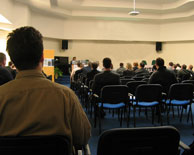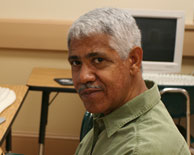Iran
8/1/25
Overview
In June 2025, first Israel and then the United States launched attacks targeting Iran and in particular, its nuclear facilities. While Iran maintains that its nuclear program is for peaceful purposes, much of the world believes they are ultimately seeking nuclear weapons capability. Join Active Minds for an in-depth look at the country of Iran, its history, current challenges, and what the future may hold as recent events play out.
Key Lecture Points
- As a major regional power and the world’s only Shi’a Muslim led government, Iran plays a central role in shaping Middle Eastern geopolitics, particularly through its strategic influence in Iraq, Syria, and Lebanon. To expand its regional influence, Iran back allied power and proxy groups putting it at odds with regional powers such as Saudi Arabia and the Persian Gulf states. These dynamics reflect broader struggles over power, security, and influence across the region, not just sectarian divides.
- The nation of Iran is the present-day legacy of the Persian Empire. As such, Iran has a deep, rich, and lengthy history, marked by a flourishing culture, and also by points of conflict. Religiously, Persia was the seat of Zoroastrianism, beginning around 1500BCE until the widespread conversion to Islam in the 7th century. Persia was converted to Shi’a Islam in 1500 during the Safavid Empire.
- Oil was discovered in Iran in the early 1900s, intensifying Western interests in the country. During WWI and WWII, Iran was occupied by the Allies. Iran and oil politics were at the forefront of the Cold War in the Middle East during the post-war period.
- In 1952, the US and UK interfered in Iran’s parliamentary elections by financing pro-Shah candidates and paying protesters resulting in the overthrow of freely elected Prime Minister Mohammad Mosaddegh in a 1953 coup as he intended to nationalize the Iranian oil industry.
- In 1979 the US-supported Shah of Iran was overthrown in a popular uprising that ultimately enabled the clerical establishment to assume control. Declaring an Islamic republic, Iran’s new government was led by Ayatollah Khomeini. The US embassy was seized in Tehran; the US broke diplomatic relations with Iran. Iranian-US relations have been strained ever since.
- Since a 1968 decision to develop a peaceful nuclear program through the Nuclear Nonproliferation Treaty (NPT) with US support in 1968, Iran has gone back and forth about its determination and capability to develop nuclear weapons. In 2015 the US, the UK, Russia, France, China and Germany reached a deal with Iran to curtail its nuclear activity in return for the gradual lifting of international economic sanctions and the release of frozen assets.
- In 2018, President Trump unilaterally withdrew the US from the 2015 Iranian nuclear agreement with advisors proclaiming Iran the most dangerous force in the Middle East.
- Since 2009, Iran has experienced recurrent popular projects against the Islamic regime. In 2022 after the death in custody of Masha Amini for allegedly improperly wearing a hijab (an Islamic headscarf).
- Since the October 2023 Hamas attack on Israel and Israel’s ensuing war in Gaza, the Israel–Iran conflict has intensified, culminating in a 2025 Israeli-Iranian war (lasting 12 days) and the US bombing of nuclear infrastructure.
- Iran’s regime faces ongoing unrest, uncertainty surrounding the succession of its aging Supreme Leader, and broader questions about its long-term stability.
Discussion Questions
- What is the likely evolution of the Cold War between Iran and Saudi Arabia?
- How will conflict with Israel impact Iran’s Islamic regime?
- Have you ever traveled to Iran? If so, describe what the country was like at that point and how it appears different today.
- Do you think the nuclear deal was a good decision for the US? Why or why not?
More to Explore
- BBC News coverage Click here
- US State Department Profile on Iran Click here
Books For Further Reading
- Amanat, Abbas. A Modern History of Iran. Yale University Press, 2019. 1000 pages. This book covers the complex history of the diverse societies and economies of Iran against the background of dynastic changes, revolutions, civil wars, foreign occupation, and the rise of the Islamic Republic.
- Axworthy, Michael. Revolutionary Iran: A History of the Islamic Republic. Oxford University Press, 2016. 544 pages. An account of Iran’s modern history, tracing its transformation from the 1979 Islamic Revolution through the post-2009 protest era.
- Azizi, Arash. What Iranians Want: Women, Life, Freedom. London, UK: Oneworld Books, 2024. 265 pages. Provides an overview of the 2022–23 uprising sparked by the death of Mahsa Amini, Azizi traces how a day of protest transformed into a nationwide movement under the banner Women, Life, Freedom.
- Fathi, Nazila. The Lonely War: One Woman’s Account of the Struggle for Modern Iran. New York, NY: Basic Books, 2014. 336 pages. 9780465069996. Fathi explores how Iran’s early promises of social equality turned to an authoritarian religious state
- Majd, Hooman. The Ministry of Guidance Invites You Not to Stay: An American Family in Iran. Anchor Books, 2014. 272 pages. Majd describes his family’s life in Tehran during a tumultuous year in Iranian politics.






Copyright © 2004-2025 Active Minds®. All rights reserved.
